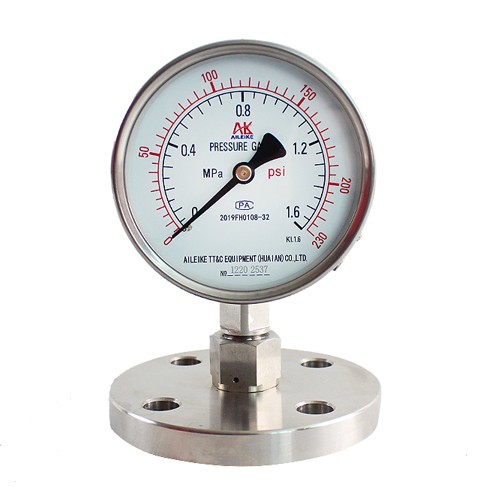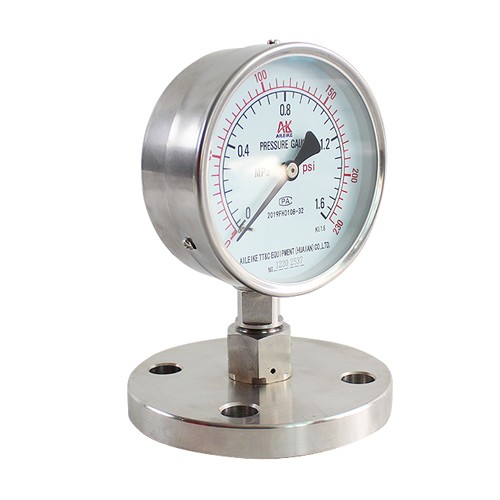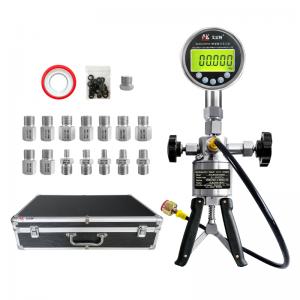Description
Diaphragm pressure gauges are mainly used in petroleum, chemical industry, chemical fiber, dyeing, pharmaceutical, alkali food and other industrial sectors. Because it has the characteristics of corrosion, high viscosity, easy crystallization, easy solidification, high temperature listening to the pressure of liquid, gas or granular solid medium, as well as the need to avoid the direct entry of the measuring medium into the pressure instrument and prevent the accumulation of sediment and easy cleaning.
Structure principle
Pressure gauge guided by pressure system(Including joints, spring tubes, current limiting screws, etc.)Gear transmission
mechanism, indicator device(Pointer and dial)And the shell.(Including watch case, watch cover, watch glass, etc.)Made up of. The shell is airtight structure, which can effectively protect the internal parts from environmental impact and filth intrusion. For filling the shell with liquid(Generally silicone oil or glycerin)The instrument can resist the vibration of the working environment and reduce the fluctuating effect of the medium pressure.
Corrosion resistance of diaphragm pressure gauges
The corrosion resistance of diaphragm pressure gauge can be guaranteed by selecting the material of diaphragm, flange and sealing ring in contact with the measuring medium.
Diaphragm material:316,316L
Flange material:316,316L
Sealing ring material: silicone rubber, polytetrafluoroethylene
Technical index
Precision grade :±1.6% ±2.5%。
Case diameter:60mm;100mm;150mm
Case material:304Stainless steel316Stainless steel.
Watch case form: safety shell structure, release after partition device
Elastic element and joint body material:304; 316The elastic element is welded with argon arc of the joint body.
Movement material: 304Stainless steel,316Stainless steel.
Joint thread:M14×1.5;G1/4; M20×1.5 ;1/2 NPTWait.
Measurement range:-0.1 ≤ 0 MPa or, 0.1 ≤ 60 MPa








